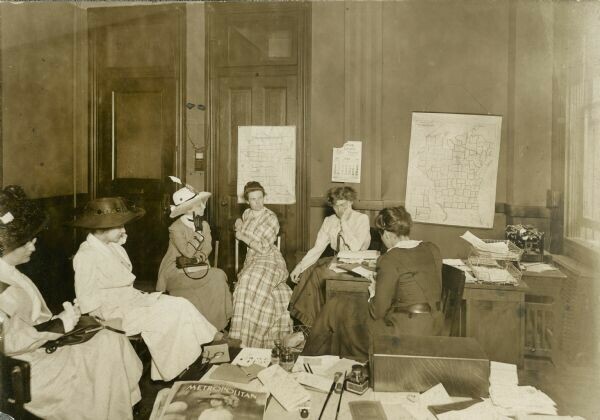Five Facts About Women’s Suffrage in Wisconsin
Wisconsin was ALMOST the first state to pass the 19th Amendment

1. WISCONSIN WAS ALMOST FIRST
The 19th amendment to the U.S. Constitution – which allowed women to vote nationwide – became official 100 years ago this month when Tennessee became the 36th state to ratify it on Aug. 18, 1920. However, a year earlier, Wisconsin had come within a few minutes of becoming the very first state to ratify the amendment: On June 10, 1919, the amendment sailed through both houses of the state Legislature nearly unanimously in less than an hour and a half. However, Illinois had crossed the finish line first earlier that same morning. Midwest represent!
2. EARLY EFFORTS
The push to enshrine women’s rights began early in Wisconsin’s history – technically, before Wisconsin was even a state: According to the Wisconsin Historical Society, a proposed state constitution drafted in 1846 would have given married women the right to own property (it would have also allowed a referendum on voting rights for Black people), but the draft constitution failed, and Wisconsin didn’t become a state until 1848. The state Legislature considered bills allowing women’s suffrage in 1855 and 1867, but both failed.
3. NOW YOU HAVE IT, NOW YOU DON’T
In the ensuing years, women started taking steps toward attaining democratic rights, thanks to the work of the Wisconsin Women’s Suffrage Association and other groups. Beginning in 1869, women were allowed to run for school boards in Wisconsin, and, beginning in 1885, they were allowed to vote in elections pertaining to school matters. The success was short-lived, however: Arguing that all local elections impacted schools, women’s rights campaign Olympia Brown voted in Racine’s municipal election in 1887. The following year, the state Supreme Court disagreed with her assertion, and they essentially rolled back the school suffrage law.
4. ON THE BALLOT AT LAST
In 1912 Wisconsinites – well, the male ones – voted on a referendum to amend the state constitution to extend the vote to women. The amendment won just 37% of the vote. The loss was blamed in part on a split in the women’s movement and in part by worries about the connections between the suffrage and temperance movements (the idea of banning booze was unpopular with the Wisconsin’s large German-American community).
5. SLOW PROGRESS
While, as noted above, Wisconsin lawmakers were relatively quick to amend the U.S. Constitution in 1919, it took Wisconsin another 15 years to enshrine women’s voting rights in the state constitution (although that was mainly a formality). The first female members of the state Assembly weren’t elected until 1924, and the first female state senator didn’t take office until 1975. And Wisconsin didn’t send a woman to the U.S. Congress until 1999!


















